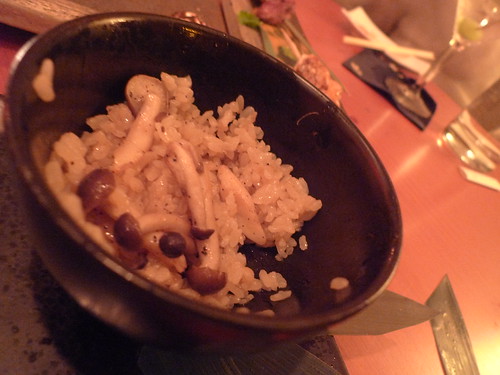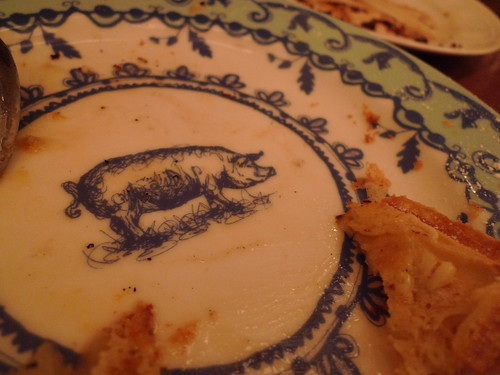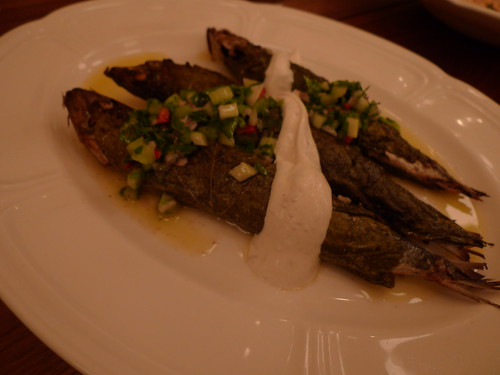La Tienda is my new favorite online store. When a package of cooking chorizo arrived in the mail last week, I knew I had to make a very hearty stew with it, I just didn’t know with what. At Whole Foods, I debated if I should pay $13 for two duck confit legs. The current state of the economy won out and I picked up four chicken legs instead for less than $4. I splurged on a $7 ham shank though because I didn’t want the good chorizo to be alone in the pot.
While cooking, the entire apartment smelled really good. Sautéing the chorizo with the garlic and onions was my favorite part, right after uncovering the pot after two hours of braising time. It was delicious with rice for dinner and it will be delicious tomorrow with pasta for lunch.
Ingredients:
1 ham shank
4 chicken legs
4 pieces of cooking chorizo, chopped
4 ribs of celery, chopped
4 carrots, peeled, chopped
4 small potatoes, peeled, chopped
1 large onion, chopped
2 cloves garlic, crushed
4 sprigs of thyme
oil, salt, pepper1. In a large Dutch oven, heat some oil and brown chicken legs on both sides. Remove them to a plate. Add a little bit more oil and brown the ham shank on all sides. Remove to the same plate.
2. In the same pot with the rendered fat, sauté the garlic and the onions. Add the chorizo and the potatoes and cook until slightly browned. Stir in the celery and the carrots with the thyme.
3. Add back the chicken and the shank. Add enough water to submerge the meats and let simmer. Season with salt and pepper. In the meantime, preheat the oven 350º. When the oven is ready, transfer the pot, covered, inside and braise for up to 2 hours. Carefully remove the pot from the oven and uncover. Stir and serve with rice, pasta or crusty bread.
Related post/s:
Buy your own chorizo and other goodies from Spain at La Tienda
Use chorizo in a tomato paella dish








